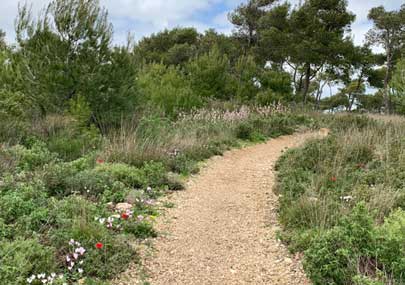Exposure to nature is beneficial for human well-being. Contact with nature is good for both physical and mental health and is related to a higher level of happiness and lower levels of stress and anger.
In the last two years, the world has been facing the COVID-19 pandemic. During this time, one of the common tools to contain transmission of the virus has been the implementation of stay-at-home restrictions and these are linked to increased anxiety and depression.
Would More Time With Nature Help?
Exposure to ongoing and uncontrolled stress affects immune processes, and influences susceptibility to and the course of disease. Therefore, developing individual resilience during such times is crucial. We thought contact with nature might help reduce stress and enhance individuals’ well-being during the COVID-19 pandemic, but stay-at-home restrictions have limited people’s ability to spend time outdoors.
Therefore, we studied four possible ways of having contact with real nature:
- The presence of nature close to home
- Nature viewed from the person’s window
- Actually being in nature on the preceding day
- Seeing images of nature
We included nature images because these have been extensively used in research on the restorative benefits of nature. Just observing nature images can serve as a type of therapy for people with accessibility limitations or barriers to real contact with nature.
Our survey was done in the last week of a five-week first lockdown in Israel. The stay-at-home orders restricted people to remain within 100 meters of home. Over 700 people answered questions about demographics, contact with nature, and emotional well-being measures. Also, some participants looked at nature images before completing the questionnaire, some examined urban images, and some completed the questionnaire without seeing any images. Below is one of the nature images we used (a walking path in a woods with flowers) and also one of the urban pictures (tall buildings with little greenery):


How Does Nature Help? Let Us Count The Ways
Nature near home and nature viewed from the windows contributed to higher levels of well-being, and being in nature on the preceding day was associated with higher levels of positive affect. These benefits emerged even among those who had been economically hurt by the pandemic. Viewing nature images also impacted well-being, mainly by reducing stress and negative affect.
Furthermore, exposure to nature was more beneficial for women than for men. For positive affect, vitality, and stress, the difference between those who had nature near home and those who did not was higher for women than for men.
A visit to an urban park, a tree viewed from your window, or a walk in nature will do you good. If you can’t do those things, try nature videos on your TV!
For Further Reading
Mintz, K. K., Ayalon, O., Nathan, O., & Eshet, T. (2021). See or be? Contact with nature and well-being during COVID-19 lockdown. Journal of Environmental Psychology, 78, https://doi.org/10.1016/j.jenvp.2021.101714
Keren Kaplan Mintz is a researcher at Shamir Research Institute, and a faculty member at the Department of Learning and Instructional Sciences, Faculty of Education, the University of Haifa. She studies environmental psychology and environmental education.
Ofira Ayalon is a Professor at the Department of Natural Resources and Environmental Management, University of Haifa and a Senior Researcher, Head of Environment Cluster Samuel Neaman Institute, Technion, Haifa, Israel. Her interests are is related to environmental concerns and policy implications.




